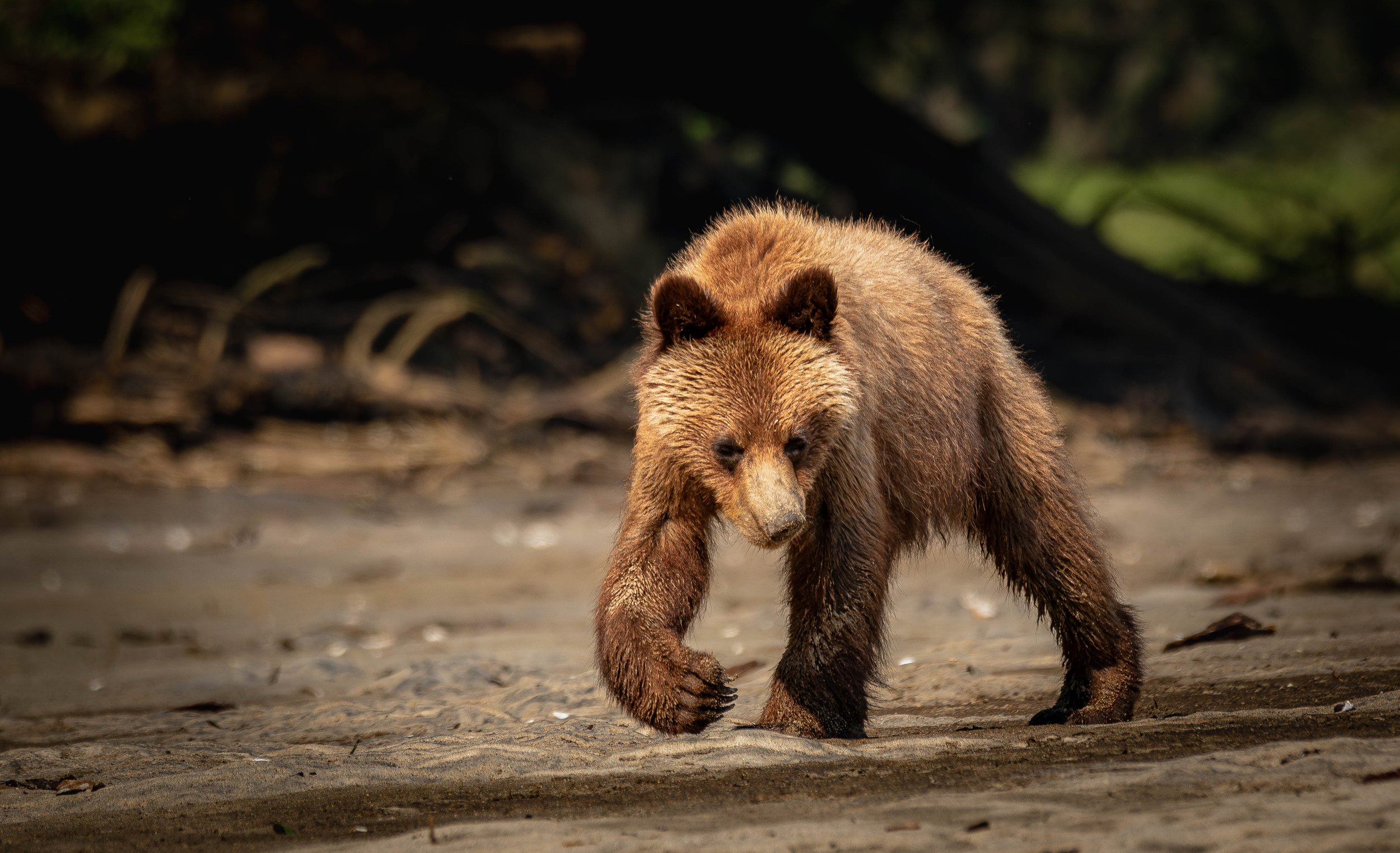
Great Bear Rainforest
The Great Bear Rainforest is one of the largest intact tracts of coastal temperate rainforest remaining globally. It is a vast area of pristine wilderness covering 6.4 million hectares on British Columbia’s north and central coast. The Great Bear Rainforest was officially recognized by the Government of British Columbia in February 2016. An agreement was announced between the BC government and First Nations that committed to protecting 85% of the old-growth forested area and is now permanently off-limits to industrial logging. Not only does the forest act as a major carbon store, helping to mitigate climate change, but it is also home to an abundance of wildlife. This agreement puts a safeguard on protecting the habitat for an abundance of animals, including grizzly bears.
Join me on a Photography Expedition to the Khutzeymateen Grizzly Bear Sanctuary in 2025!
Guiding in Grizzly Bear Country
In 2023, I spent a few months in the Great Bear Rainforest working as a biologist/guide at Great Bear Nature Tours. I was part of a team leading science-driven grizzly bear viewings on foot, by boat, and in vehicles with a major focus on natural history interpretation. The Great Bear Rainforest is one of the most serene habitats I have ever found myself in and is an area of high bear density, making it an incredibly magical place. Where else on Earth are you able to hear a bear chewing on sedge, mere feet away? Or smell the recently upturned soil as a bear digs for clams along the beach? Or hear the thumping of paws on the ground during a particularly active play session between a mum and cub? Or be privy to an intimate moment where you can hear a cub humming as it nurses?
Photography and Conservation
Working around bears has exponentially grown my love for this species and its diverse habitats. I hope to foster this love for bears in other people by photographing and documenting these experiences. Through visual storytelling, I strive to inspire others to experience nature and generate a passion for conservation. Scientists are developing other unique ways in which photographs can be used to help conservation initiatives. Through the BearID Project, for example, researchers are using photographs to bolster noninvasive techniques that aid with bear identification and monitoring. The BearID Project aims to adapt human facial recognition algorithms for wildlife, utilizing the efforts of citizen scientists and camera traps to locate and identify individual bears. Photography is now being used both in conservation storytelling and as a research technique to better understand our bears, while garnering protection for them and their habitat.



















